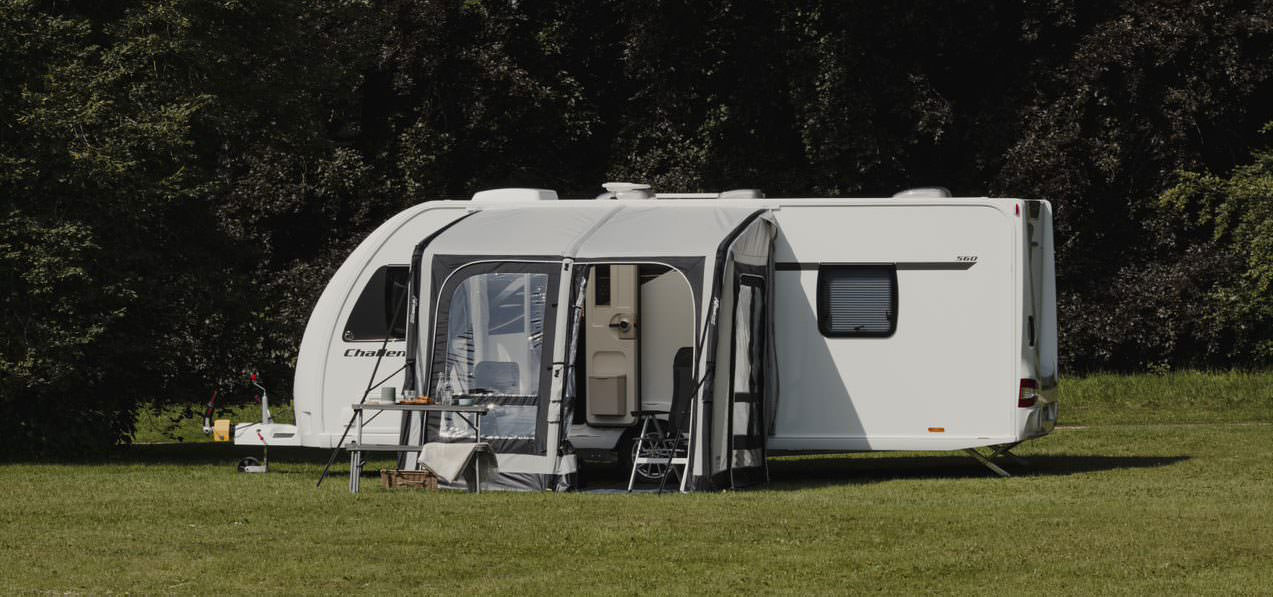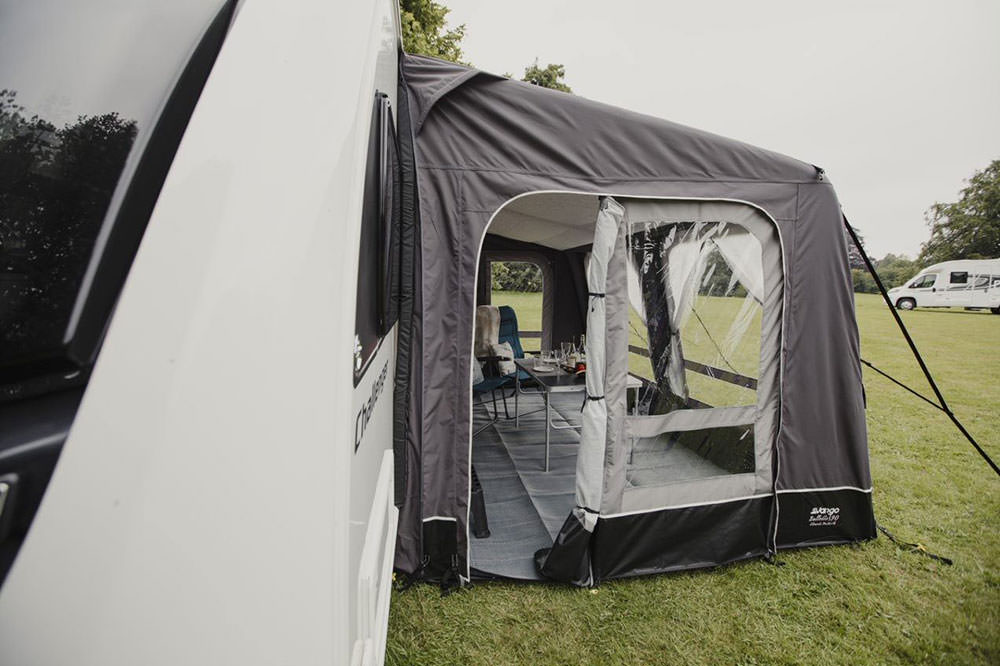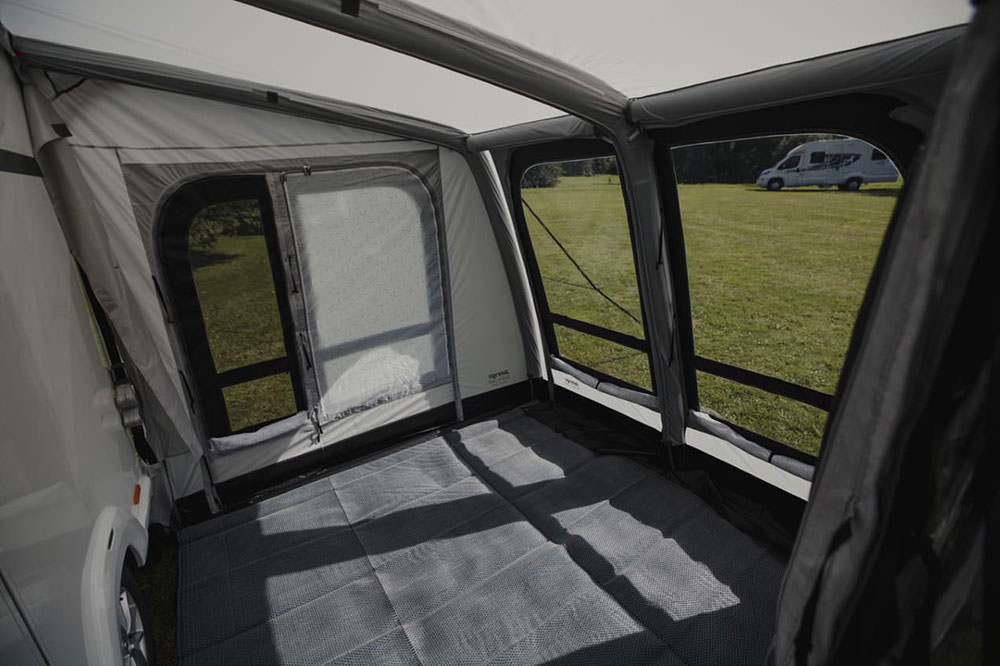
What is a Caravan Awning?
Sounds like a silly question, but it is a common one - an awning is purposefully designed to fit onto the side of the caravan, and interacts with the caravan, like a conservatory or extension would to a house, providing additional, versatile space.
Caravan awnings have become a must have accessory to the caravan, providing flexibility. However, purchasing an awning can be a minefield, so we have tried to simplify it.
- Decide a Budget
- Decide on whether you require a touring or residential awning?
- Select what type of caravan awning you require - IE Porch or A to B fitting.
- Poled or Air Awning?
Attaching an awning to the side of the caravan can be an arduous task, but a worthwhile experience, as it will enhance the auxiliary living space of the caravan.
Firstly, the decision on what style to purchase, there are two overall styles - Touring or Residential awnings.
Touring vs Residential
There are two main styles of caravan awnings, the Touring Awning or the Residential Awning. It is important to purchase the correct one for the correct purpose.
Touring Awnings:
A Touring Awning is perfect for short-term pitching, and as the name suggests perfect for touring holidays, where you are moving from place to place. For example, 1-2 week holidays at a time. Therefore, this type uses lighter weight fabrics, and components, with the objective of making the awning lightweight and portable. Typically manufactured using Polyester, Tencate or Taslan fabrics.
** This type of awning should be used for short term camping trips, and not left pitched for long term periods on residential pitches. If a touring awning is used on a long-term pitch, it will invalidate the warranty as the fabric is not designed for longer term pitching, and will suffer from UV Degradation.
Residential Awnings (also known as seasonal awnings)
Residential awnings are suitable for caravan owners who have a seasonal pitch on a campsite where their caravan is situated for longer terms. A residential awning is designed to be pitched for longer periods of time. They are heavier in nature, with more robust fabrics and materials used. As a result, it will not suffer from UV degradation to the same level a touring awning would, and would stand the test of time, throughout varying weather conditions. The only time they should need to be removed from the vehicle is if there is a severe weather warning, which is a threat to temporary structures, such as gale force winds.
Types of Caravan Awning
There are many different style of awning, and its important to choose the right style to marry up to your caravan, and your overall purpose of the awning.
Porch Awnings
Porch awnings are typically smaller, and usually designed for touring, to add a little bit of protection from the elements, and living space.
This style fits across the roof rail area in the C Channel, and will require a certain amount of straight channel to be fitted properly. So for example, say it was a 250cm wide awning, it would have 280cm of Kador Rail, and would sit parallel to the roof panel of the caravan, as per the photo below.
Typically, this has become the more popular style, due to the versatility of the fitting - meaning manufacturers do not have to make several different sizes of the same product.
To sure the awning sides are flush to the caravan, there is typically steel poles, or some kind of bracing system to effectively brace the awning against the caravan.

Full Awnings (A-B Style Fit)
A to B fitting awnings will fit from the bottom left of the caravan, all the way to the bottom right, and fully seals the awning against the caravan using the Kador Rail. Typically, this type of awning, is made in many sizes, and you would need to know the A to B measurement of the caravan to ensure you select the correct one.
Types of Structure
Poled Awnings
Poled caravan awnings are in decline, as the market shifts towards an Air based design, for easier inflation, and generally less hassle. There is still a market for framed pole awnings, but it is getting smaller. The advantage a poled awning does have is the ability to split the poles from the canvas, to make portability and weight more manageable. The only pole awnings now available are from more traditional manufacturers such as Bradcot.
Air Awnings
Air caravan awnings have really taken the market by storm, revolutionising how they are built, designed and the ease of pitching. Awnings are tricky enough without adding the hassle of a poled framework. Air makes life simpler, and this now makes up 95% of caravan awning sales. In fact, most suppliers do not have a poled caravan awning in their range, but rely on the Air design.
Single Point Air
Allows it to be inflated from one valve, this increases the speed of pitching, and the ease of pitching. This has become the most popular style of caravan awning now, with Single Point Inflation being the most sought after design.

Types of Fabrics
Why is fabric important?
The fabric is the mean strength of an awning, as it is only as good as the fabric used to manufacture it. Polyester is typically used in lighter models, and Tencate or Taslan, makes up some of the heavier duty models, which are designed for harsher weather conditions.
Polyester
Polyester is more ideal for touring, lightweight awnings. This is the weakest fabric available, but is designed for short term camping holidays, with the benefits being the reduction in pack sizes weight and storage space. There are of course different strength and thicknesses of polyester, but polyester does break down quicker than other fabrics as it is more susceptible to UV degradation.
Pro’s
- Lightweight fabric
- Quick drying
- Ideal for touring awnings
Con’s
- Less durability when compared to Tencate or Taslan fabrics.
- Not ideal for residential pitching.
- Fades quicker
Taslan
Taslan fabric is 300% stronger than polyester, which makes it ideal for all-season round protection from the elements. The Taslan is a specialised air woven yarn, but as a result, it is a heavier fabric, which means it has larger pack sizes, and a higher weight.
Tencate
Tencate along with polyester is the market leader in caravan awnings, offering a more durable fabric, which should last longer than regular polyester. There are two levels of Tencate fabric:
- Tencate 100% Polyester - ideal for touring, all-season awnings.
- Tencate 100% Polyester PVA - ideal for residential awnings, as it is a tougher blend of fabric.
Popular Features to Look out For:
Most caravan awnings now have many different features which make them popular such as:
- Single Point Inflation or Air Design - for an easier pitching / set down experience
- Curtains for Privacy - as most people tend to use the awning as a living space, curtains are necessary for an evening time.
- Mesh Panels - or ability to add mesh doors for bug-free ventilation.
- Versatility for optional extras - its always good to check, can you add additional annexes or sleeping compartments. Higher spec awnings typically have more matching accessories for a more comfortable experience.
Top Tips to Consider
- Weight and pack size, you need to be able to store, move and pack your awning.
- Ease of pitching - how many people will be pitching the awning.
- Length of use / how many times you want to use it per annum.
